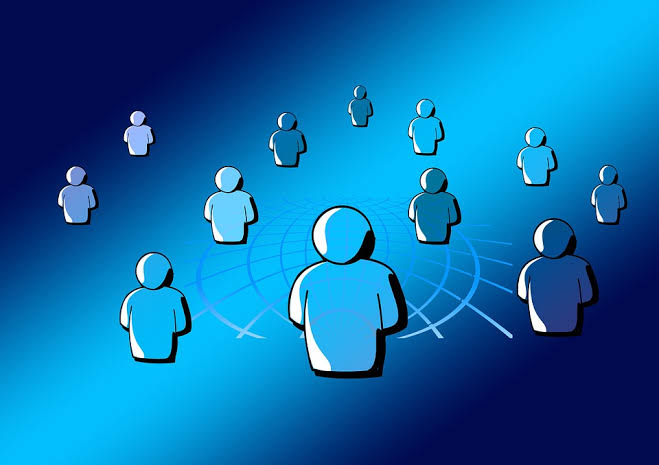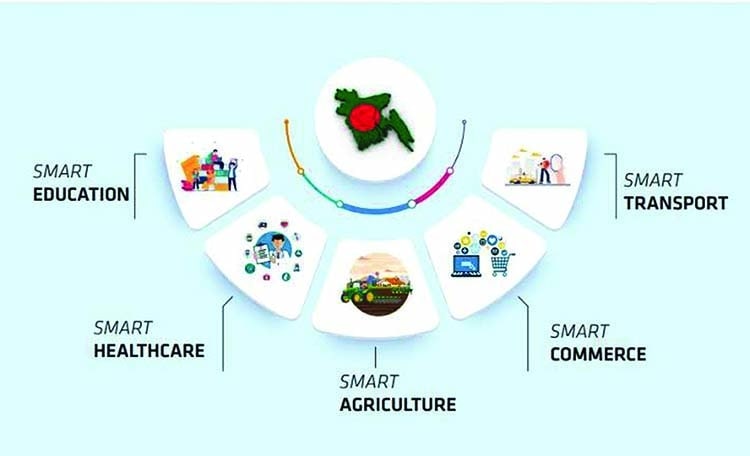In an increasingly interconnected world, the concepts of distance, accessibility, and connectivity shape the ways in which humans interact with one another. These three interrelated ideas have become pivotal factors in shaping social, economic, and cultural dynamics. This article aims to delve into the intricate relationship between distance, accessibility, and connectivity, and how they influence processes of human interaction. By exploring various aspects of this relationship, we can gain a deeper understanding of the transformative impact of technology, globalization, and infrastructure on our social fabric.
Table of contents
- 1. Defining Distance, Accessibility, and Connectivity
- 2. The Role of Technology in Redefining Distance
- 3. Globalization and the Erosion of Spatial Barriers
- 4. Infrastructure: Enabling Connectivity and Accessibility
- 5. Social Media and the Transformation of Human Interaction
- Challenges and Implications
- 7. The Future of Human Interaction: Balancing Distance, Accessibility, and Connectivity
- 8. Conclusion
- 9. Bibliography
1. Defining Distance, Accessibility, and Connectivity
1.1 Distance: Beyond Physical Measurement
Distance, traditionally understood as the physical space between two points, is no longer limited to mere geographical measurement. In the digital age, distance has become relative, with advancements in technology allowing individuals to connect across vast distances in real-time. The perception of distance has shifted, and the barriers imposed by physical space have been eroded.
1.2 Accessibility: Breaking Barriers
Accessibility refers to the ease with which individuals can reach places, resources, or opportunities. It encompasses both physical and digital access. Improving accessibility involves removing obstacles and creating inclusive environments. By enhancing accessibility, individuals can engage in meaningful interactions irrespective of their physical location or background.
1.3 Connectivity: Building Bridges
Connectivity refers to the ability of individuals, devices, or systems to link and communicate with one another. It encompasses various forms of connection, including interpersonal, technological, and infrastructural. Connectivity plays a crucial role in facilitating human interaction by enabling the exchange of information, ideas, and emotions across different contexts and geographies.
2. The Role of Technology in Redefining Distance
2.1 Shrinking Physical Distance through Communication Technologies
Technological advancements, such as telecommunication systems and the internet, have revolutionized the way we perceive distance. Through email, video calls, and social media platforms, individuals can interact with others regardless of their physical distance. The ability to bridge this spatial gap has transformed the nature of human interaction, fostering global collaborations and expanding social networks.
2.2 Digital Divide: Challenges to Accessibility and Connectivity
While technology has the potential to overcome physical distance, it also highlights issues of accessibility and connectivity. The digital divide, characterized by disparities in access to technology and the internet, creates barriers to meaningful interactions. Addressing this divide is crucial to ensure equal opportunities for all individuals and to promote inclusive connectivity.
2.3 Virtual Presence: Bridging the Gap
Virtual reality and augmented reality technologies offer immersive experiences that transcend physical boundaries. Through these technologies, individuals can engage in virtual environments that simulate real-world interactions, fostering a sense of presence and closeness. Virtual presence provides a unique way to bridge distances and enhance human interaction, albeit in a digitally mediated form.
3. Globalization and the Erosion of Spatial Barriers
3.1 Global Trade and Economic Integration
Globalization has transformed the world into an interconnected marketplace, facilitating the exchange of goods, services, and ideas. The reduction of trade barriers and the emergence of global supply chains have made distance less consequential in economic transactions. As a result, individuals and communities from diverse locations can engage in economic interactions that were once limited by geographical constraints.
3.2 Cultural Exchange and Global Awareness
Globalization has also contributed to the exchange of cultural practices, ideas, and values across borders. Access to diverse cultural expressions through media and communication channels has expanded individuals’ understanding of different societies and fostered cross-cultural interactions. This cultural exchange transcends physical distance, leading to a more interconnected and inclusive global society.
3.3 Migration and the Redefinition of Borders
The movement of people across borders has redefined notions of distance and proximity. Migration, driven by factors such as economic opportunities and political unrest, has brought individuals from different backgrounds and cultures into closer proximity. As people settle in new locations, their interactions reshape social dynamics, leading to multicultural societies and the blending of traditions, languages, and beliefs.

4. Infrastructure: Enabling Connectivity and Accessibility
4.1 Transportation Networks: Physical Mobility
Transportation infrastructure plays a crucial role in reducing physical distance and enabling human interaction. Efficient transportation networks, including roads, railways, and airports, facilitate the movement of people, goods, and ideas. By improving accessibility and connectivity, transportation infrastructure enhances social and economic integration on local, regional, and global scales.
4.2 Telecommunications Infrastructure: Digital Connectivity
Robust telecommunications infrastructure, such as fiber-optic networks and satellite systems, enables seamless digital connectivity. Reliable internet access and communication networks are vital for individuals to connect, exchange information, and participate in online communities. Accessible and affordable digital infrastructure ensures that connectivity is not limited by geographical or socioeconomic factors.
4.3 Urban Planning and Accessibility
Well-designed cities prioritize accessibility, ensuring that individuals can easily navigate their surroundings and access essential services. Urban planning strategies that emphasize walkability, public transportation, and inclusive infrastructure contribute to the creation of vibrant, connected communities. By reducing physical barriers, urban planning enhances human interaction and fosters social cohesion.
5. Social Media and the Transformation of Human Interaction
5.1 Social Media as a Catalyst for Connectivity
Social media platforms have revolutionized the way individuals interact and communicate. They offer a virtual space where people from different locations can connect, share ideas, and form communities based on shared interests. Social media has facilitated the creation of networks that transcend physical boundaries, enabling widespread collaboration and activism.
5.2 Virtual Communities and Online Relationships
Online communities have emerged as platforms for individuals with shared interests to connect and engage in discussions and collaborations. These communities provide a sense of belonging and foster social interactions that might not have been possible in traditional physical settings. Online relationships, although mediated by technology, can be meaningful and contribute to personal growth and social support.
5.3 The Impact of Social Media on Personal Relationships
The pervasive use of social media has both positive and negative implications for personal relationships. While it enables individuals to stay connected with friends and family across distances, it can also lead to a superficial sense of connection and a reduction in face-to-face interactions. Balancing online and offline interactions is crucial to maintaining healthy relationships and a sense of genuine human connection.
Challenges and Implications
6.1 Information Overload and Disconnect
The abundance of information and constant connectivity can lead to information overload and a sense of disconnection. The overwhelming volume of digital content and the pressure to be constantly accessible can impact mental well-being and hinder meaningful human interactions. Navigating this digital landscape requires conscious efforts to filter information, establish boundaries, and prioritize genuine connections.
6.2 Privacy and Security Concerns
The increasing connectivity in the digital age raises concerns about privacy and security. The collection and use of personal data by technology companies and the potential for cyber threats pose challenges to trust and confidentiality. Safeguarding privacy and ensuring data security are essential to maintain individuals’ confidence in engaging in online interactions.
6.3 Inequality and Access Disparities
Despite advancements in technology and globalization, significant disparities in accessibility and connectivity persist. Socioeconomic factors, geographic location, and systemic inequalities contribute to unequal access to resources, opportunities, and technology. Bridging these access gaps is crucial to ensure that all individuals can actively participate in the global network of human interaction.
7. The Future of Human Interaction: Balancing Distance, Accessibility, and Connectivity
7.1 Finding Equilibrium in a Hyperconnected World
As technology continues to evolve and shape human interaction, finding a balance between distance, accessibility, and connectivity becomes crucial. Striking a balance involves leveraging the benefits of connectivity while preserving the importance of physical presence and face-to-face interactions. Understanding the nuances of different modes of interaction and their impact on social dynamics can help shape a future where technology enhances, rather than replaces, meaningful human connections.
7.2 Fostering Inclusive Connectivity and Access
Addressing the digital divide and promoting inclusive connectivity require concerted efforts from governments, organizations, and communities. Initiatives such as expanding internet infrastructure, providing digital literacy programs, and reducing the cost of technology can bridge the access gap. Fostering inclusive connectivity ensures that all individuals have the opportunity to participate in the global network of human interaction.
7.3 Nurturing Meaningful Interactions
While technology facilitates connections, nurturing meaningful interactions relies on human agency and intentionality. Actively fostering empathy, understanding, and active listening in both digital and physical spaces can strengthen human relationships. Investing in social and emotional intelligence, promoting digital citizenship, and creating spaces that encourage genuine connections are essential for fostering meaningful human interaction in the digital age.
8. Conclusion
In conclusion, the ideas of distance, accessibility, and connectivity are intricately intertwined in processes of human interaction. Technological advancements, globalization, and infrastructure development have transformed the way individuals connect, collaborate, and engage with one another. Understanding the relationship between these concepts provides insights into the challenges and opportunities of an interconnected world. By embracing the benefits of connectivity while addressing inequalities and preserving the importance of physical presence, we can navigate a future where human interaction is enriched by the interplay of distance, accessibility, and connectivity.
9. Bibliography
- Castells, M. (1996). The Rise of the Network Society. Oxford, UK: Blackwell Publishers.
- Giddens, A. (1990). The Consequences of Modernity. Stanford, CA: Stanford University Press.
- Ito, M., et al. (2015). Hanging Out, Messing Around, and Geeking Out: Kids Living and Learning with New Media. Cambridge, MA: The MIT Press.
- Rheingold, H. (2000). The Virtual Community: Homesteading on the Electronic Frontier. Cambridge, MA: The MIT Press.
- Sassen, S. (2001). The Global City: New York, London, Tokyo. Princeton, NJ: Princeton University Press.
- Toffler, A. (1980). The Third Wave. New York, NY: Bantam Books.



 For all latest articles, follow on Google News
For all latest articles, follow on Google News